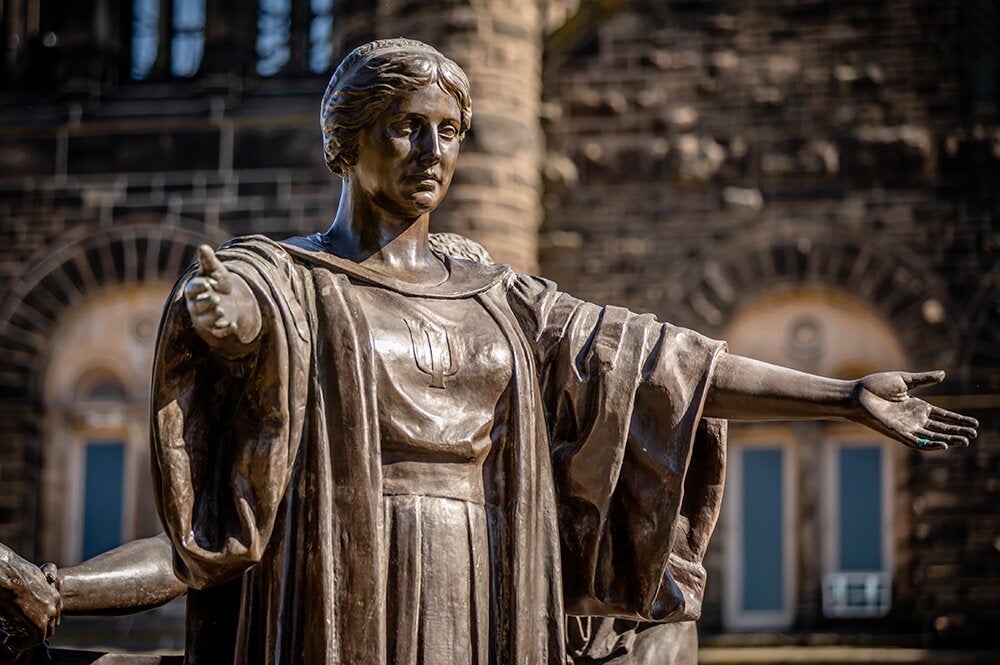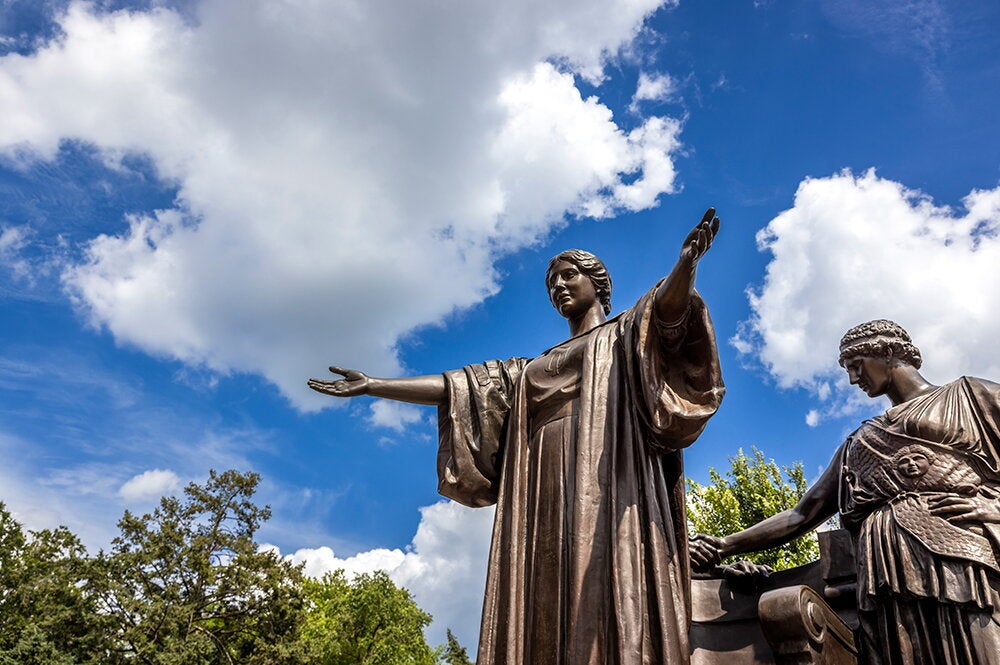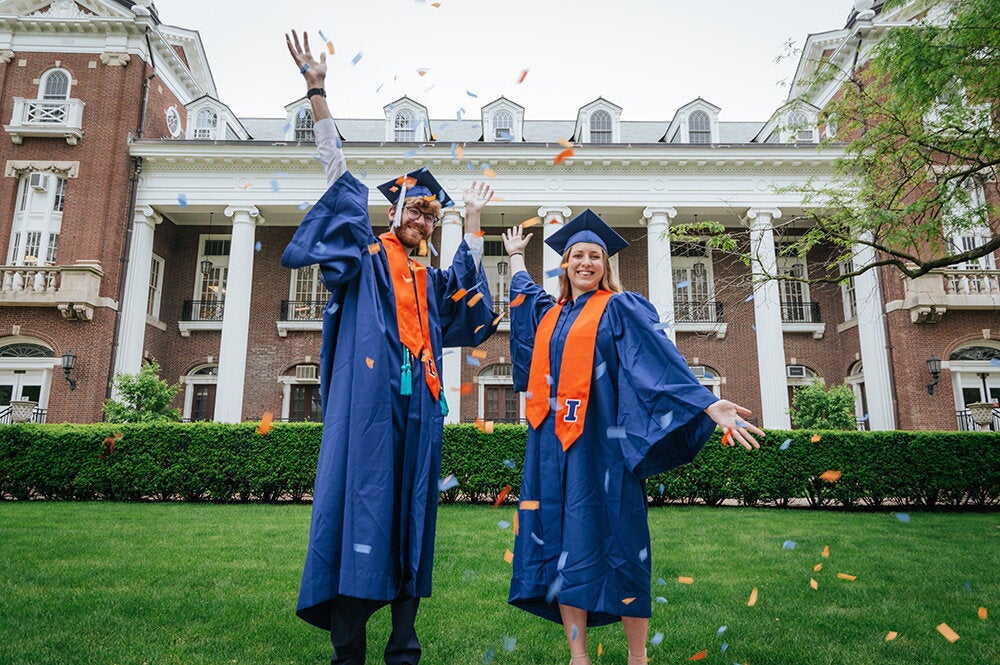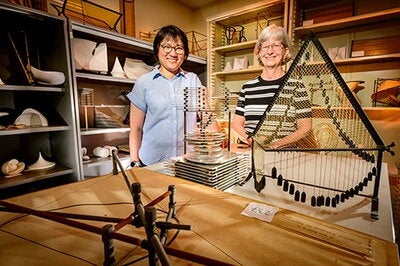
University of Illinois Urbana-Champaign students recreated some of the historical mathematical models owned by the U of I math department using a 3D printer.
The Illinois math department has nearly 400 mathematical models — one of the world’s largest collections — from the late 19th and early 20th centuries. The models demonstrate abstract mathematical principles in a three-dimensional way. Many of them were purchased around the turn of the century from the German company Martin Schilling, and others were designed and built by Illinois math professors.
“They are a department treasure,” said mathematics librarian Sarah Park. “We have the largest collection of these objects, and they offer a unique value to mathematics scholars on campus as well as around the world.”
The models were displayed throughout Altgeld Hall, which houses the math department. Moving them to storage during the ongoing renovations of Altgeld Hall offered an opportunity to catalogue and recreate the models. Students worked on the project through the Illinois Mathematics Lab, which offers undergraduate opportunities for mathematical research, experimentation and visualization. They used the Champaign Urbana Community Fab Lab to make the new models.
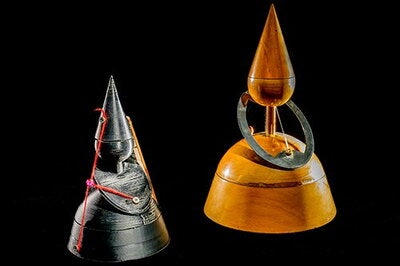
“These originally were made because mathematics at the time was rapidly becoming more abstract,” said Karen Mortensen, the director of the Illinois Mathematics Lab. “Mathematicians wanted to make something more concrete for students to look at, to enhance their understanding of abstract concepts.”
The models were intended to be handled by students, who could study them from different angles. At one time, some of the models could be checked out from the math library, but many of them have become fragile. Their condition varies, Mortensen said. Those made of plaster are mostly in good condition, although some have stains or minor damage. The wooden models made of beech are sturdy. But many of the models use string to represent ruled surfaces, and some of the strings are detached, or the fiber has deteriorated.
Mortensen took the students to see the historical models in storage and was surprised to see how engaged they were with the models.
“You can study the equations and look at re-creations moving on the screen, but it’s different when you see it like this. Even though they’d seen pictures, the students suddenly got a lot more interested and were making conjectures about what a model shows. I didn’t know it would make that much of a difference to see them in person and touch them, rather than seeing a high-quality picture,” Mortensen said.
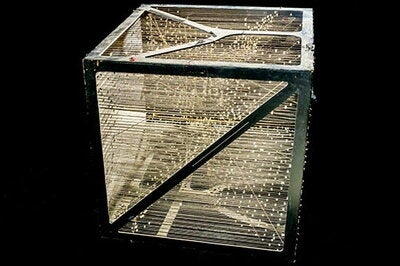
Making re-creations of the models brings another level of learning for them, Park said. She said it was important for the students to have a hands-on experience and be able to do the work themselves, which the CU Community Fab Lab offered.
The students wrote mathematical descriptions of the models and the concepts they demonstrated, which required them to have an in-depth understanding of the equations that the models represent, Mortensen said. To find the equations for some of the models, the students had to find and read mathematical papers from the turn of the century, some of which had to be translated from German.
Michael Dalton, the Fab Lab manager, taught the students how to take the 3D models they created in Mathematica and get them prepared for 3D printing using MeshMixer. They optimized the models by simplifying overly complex geometry that the 3D printer’s slicing software would have difficulty processing.
Then the students used a slicing software with a graphical interface that provides a visualized preview of the 3D printed model, allowing the user to view each layer of the 3D print. It also issues warnings if there are any areas that the printer cannot produce, so the user can adjust the parameters. Then the slicing software produces code that the printer reads to print the object in very thin layers.

“There are a number of things they have to know for the 3D prints to succeed,” Dalton said.
For example, structures with curved or overhanging surfaces must have supporting material so they won’t collapse while they are being printed.
Dashiell Cloud, a rising senior studying physics, said the project required understanding the software and its constraints to get the results he wanted. One challenge for him was creating an ellipsoid that featured lines of curvature along its surface. He said recreating the model helped him better understand the concept in its 3D representation.
Wentao Qi, a rising senior majoring in math, said he enjoyed learning how to create the code in Mathematica, and he learned a lot of mathematical proofs and theories through the project.
“To plot the mathematical models and print them, we had to fully understand the important mathematical theories behind them and try to figure out why such models even exist and what are they representing,” he said.
There were instances when he was trying to use a function of the modeling software in a unique way that posed challenging coding problems for him. Working as a group helped in finding solutions to the project’s challenges, and he learned from talking with the other students, he said.
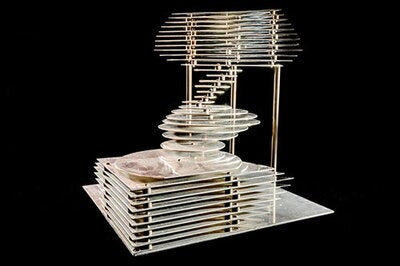
Dalton said that 3D printing is a valuable skill to learn because the principles used in that process are at the core of Computer Numerical Control machines, which are used in all kinds of labs.
“A lot of the fundamentals can be incredibly valuable and give a frame of reference when exploring different machine operations. It’s pretty useful knowledge to be able to communicate with other people, understand what these processes cost, the time it takes, and whether for a particular model it’s better to 3D print or use some other manufacturing process,” he said. “It gets people thinking in a very different way when they’re in here instead of a traditional classroom.”
The math department and the University Library plan to have a digital collection of the historical models that includes information about the models, photographs, the mathematical descriptions, and the digital files created by the students. The files will be publicly available so anyone can use them to print a model, Mortensen said.
The Illinois Mathematics Lab has outreach programs in local schools, and the 3D-printed models can be used in those programs. The department also is working with the University Library’s Preservation Services on the restoration of the original models.
